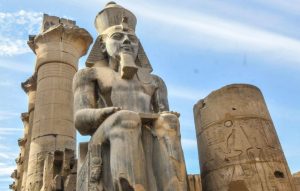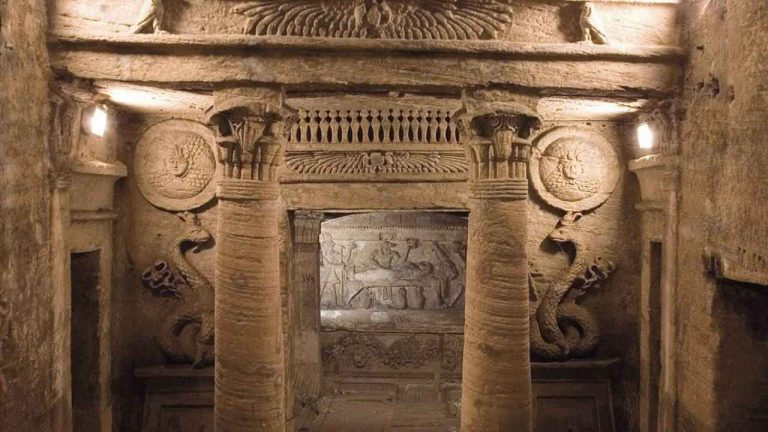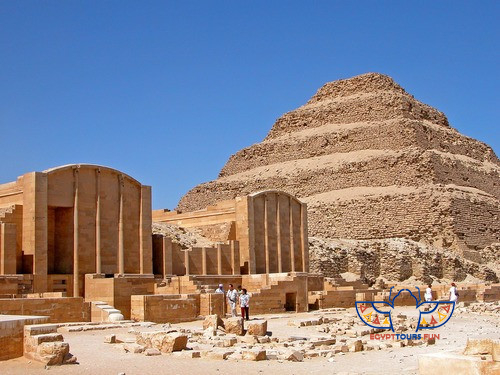Luxor Temple: A Timeless Marvel of Ancient Egypt
 Nestled on the east bank of the Nile River in the heart of modern-day Luxor, the Luxor Temple stands as a testament to the grandeur and spiritual significance of ancient Egypt. Unlike many other temples dedicated to gods or pharaohs, Luxor Temple was primarily a place of royal rejuvenation, where pharaohs were crowned and celebrated. With its towering columns, intricate carvings, and awe-inspiring statues, Luxor Temple is a must-visit destination for anyone exploring Egypt’s ancient wonders.
Nestled on the east bank of the Nile River in the heart of modern-day Luxor, the Luxor Temple stands as a testament to the grandeur and spiritual significance of ancient Egypt. Unlike many other temples dedicated to gods or pharaohs, Luxor Temple was primarily a place of royal rejuvenation, where pharaohs were crowned and celebrated. With its towering columns, intricate carvings, and awe-inspiring statues, Luxor Temple is a must-visit destination for anyone exploring Egypt’s ancient wonders.
The History of Luxor Temple
Luxor Temple was constructed around 1400 BCE during the New Kingdom period, primarily by Pharaoh Amenhotep III and later expanded by Ramses II. Dedicated to the Theban triad of Amun, Mut, and Khonsu, the temple was a center of religious and political power. Over the centuries, it has witnessed the rise and fall of empires, including the Romans, who converted part of the temple into a fortress and church.
Key Historical Highlights:
Built by Amenhotep III and expanded by Ramses II.
Used for the annual Opet Festival, a celebration of the pharaoh’s divine connection to Amun.
Features additions from Alexander the Great and the Roman Empire.
Architectural Marvels of Luxor Temple
The temple’s design is a masterpiece of ancient Egyptian architecture. As you walk through its grand entrance, you’ll be greeted by the towering First Pylon, built by Ramses II and adorned with scenes of his military victories. Beyond the pylon lies the Great Court of Ramses II, surrounded by colossal statues of the pharaoh.
Must-See Features:
The Avenue of Sphinxes: A 2.7-kilometer-long path lined with sphinx statues connecting Luxor Temple to Karnak Temple.
The Colonnade of Amenhotep III: A stunning row of 14 papyrus-shaped columns leading to the temple’s inner sanctum.
The Sanctuary of Amun: The holiest part of the temple, where the statue of Amun was housed.
Luxor Temple at Night: A Magical Experience
One of the most unforgettable ways to experience Luxor Temple is by visiting at night. The temple is beautifully illuminated, casting a golden glow on its ancient walls and columns. The play of light and shadow brings the temple’s carvings and hieroglyphics to life, creating a magical atmosphere.
Why Visit at Night?
The temple is less crowded, offering a more peaceful experience.
The lighting highlights the intricate details of the carvings.
Perfect for photography enthusiasts.
The Luxor Temple Sound and Light Show
For an immersive experience, don’t miss the Luxor Temple Sound and Light Show. This captivating performance uses lights, music, and narration to tell the story of ancient Thebes and the temple’s significance. It’s a great way to learn about the history and legends surrounding Luxor Temple while enjoying its beauty under the stars.
What to Expect:
A 60-minute show available in multiple languages.
Dramatic storytelling that brings ancient Egypt to life.
Stunning visuals projected onto the temple walls.
Tips for Visiting Luxor Temple
To make the most of your visit to Luxor Temple, keep these tips in mind:
Best Time to Visit: Early morning or late afternoon to avoid the heat and crowds.
Guided Tours: Consider hiring a guide to gain deeper insights into the temple’s history and symbolism.
Combine with Karnak Temple: Since the two temples are connected by the Avenue of Sphinxes, visiting both in one day is highly recommended.
Dress Comfortably: Wear lightweight clothing and comfortable shoes, as you’ll be walking on uneven surfaces.
Why Luxor Temple is a Must-Visit
Luxor Temple is more than just an ancient site; it’s a living testament to the ingenuity and spirituality of ancient Egypt. Its central location in Luxor makes it easily accessible, and its rich history and stunning architecture ensure it’s a highlight of any trip to Egypt. Whether you’re exploring its grand courtyards, marveling at its towering statues, or experiencing its nighttime magic, Luxor Temple is sure to leave you in awe.




